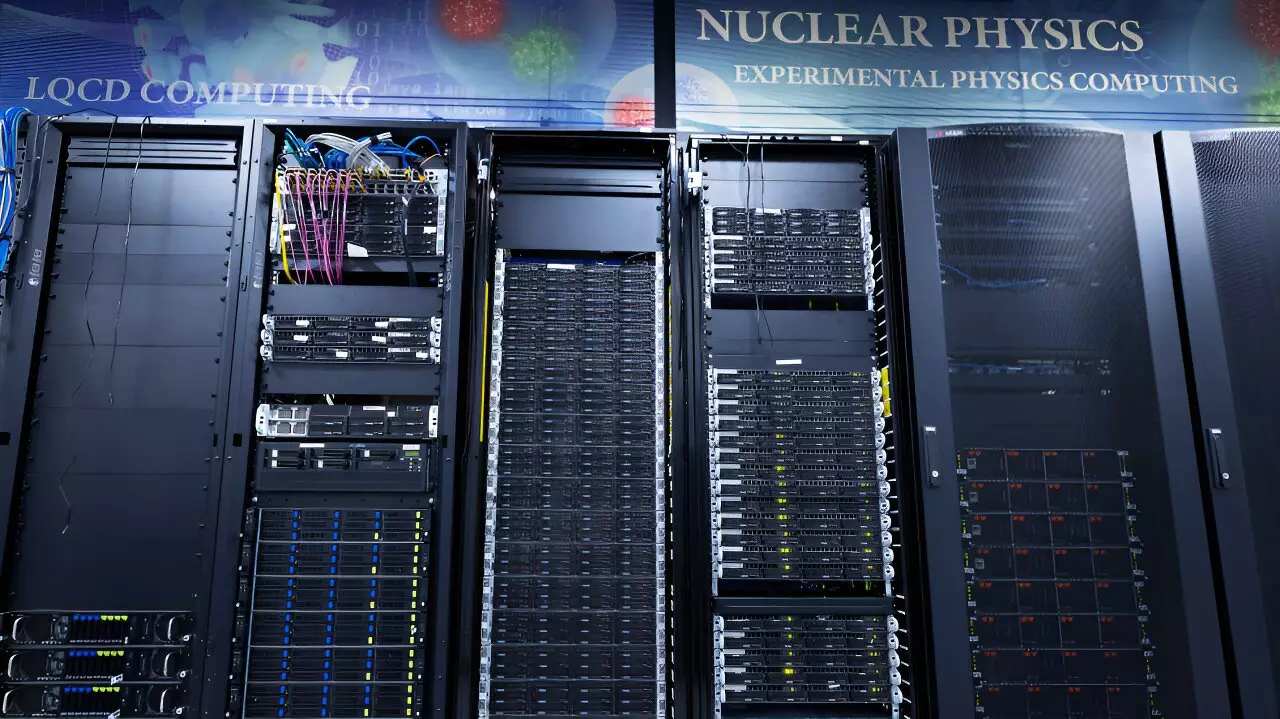The conventional image of matter as a solid and stable entity is misleading. When we delve into the atomic structure, particularly the intricate world of hadrons—protons and neutrons—we discover a dynamic playground of subatomic particles. At the core of hadrons lies an intricate arrangement of quarks and gluons, collectively referred to as partons. This underlying complexity is the focus of the HadStruc Collaboration, a dedicated group of physicists operating under the auspices of the U.S. Department of Energy’s Thomas Jefferson National Accelerator Facility. Their recent research endeavors aim to delineate the interactions of partons and map the hadronic structure in a manner that improves our understanding of the universe at a fundamental level.
The HadStruc Collaboration brings together a diverse group of researchers from various institutions, illustrating a concerted effort in nuclear physics. The team, headed by visionary scholars like Joseph Karpie, includes experts from prestigious institutions such as William & Mary and Old Dominion University. Each member’s unique background contributes to a richer understanding of the complex interactions that govern hadrons. Notably, a collective of physicists recently published their findings in the Journal of High Energy Physics, aiming to forge a deeper comprehension of the internal structure of protons.
This multidisciplinary collaboration underscores the immense value of cooperation in scientific inquiry. By harnessing the intellectual prowess of its members, the HadStruc team strives to tackle the challenging question of how quarks and gluons are distributed within protons. Their approach rests on a mathematical framework known as lattice quantum chromodynamics (QCD), which furnishes a powerful tool for examining the fundamental forces that bind these particles.
A key aspect of the HadStruc group’s work lies in their use of Generalized Parton Distributions (GPDs). Unlike traditional one-dimensional parton distribution functions (PDFs) that offer limited perspectives, GPDs facilitate a three-dimensional understanding of hadronic structure. This shift is crucial, particularly in addressing fundamental questions regarding the origin of the proton’s spin—a cornerstone in particle physics.
By recognizing the importance of gluons and their spin contributions, researchers hope to paint a more comprehensive picture of how the dynamics of partons shape the properties of hadrons. Dutrieux, a notable team member, emphasizes the revolutionary potential of GPDs in uncovering the nuanced interactions among quarks, gluons, and the overall structure of the proton. Such insights could alter our understanding of fundamental particle interactions, expanding the horizon of theoretical physics.
Understanding the complex interactions of partons necessitates sophisticated calculations. The HadStruc team employs cutting-edge supercomputing resources, conducting thousands of simulations to validate and refine their theoretical models. The computational effort is staggering, with 65,000 simulations performed utilizing powerful facilities like Frontera and the Frontier supercomputer at Oak Ridge National Laboratory. The scale of these computations reflects the intricate nature of particle interactions and the challenges associated with modeling them.
As the researchers sift through massive data sets, they continuously improve the accuracy of their models. Karpie mentions that refining their approximations will be a critical step, albeit an expensive one in terms of computational resources. This iterative approach, balancing theory with empirical data, will illuminate pathways to further discoveries in the field of nuclear physics.
While theoretical advancements provide a robust framework for understanding hadronic structure, experimental validation remains paramount. The HadStruc Collaboration’s meticulously developed theories are being tested through various high-energy experiments, including deeply virtual Compton scattering and deeply virtual meson production at Jefferson Lab. There is palpable excitement within the collaboration as they anticipate how their findings will hold up against experimental data.
Moreover, the Electron-Ion Collider (EIC) at Brookhaven National Laboratory represents a frontier for future experiments. This powerful new facility is expected to deepen our probing of hadrons, offering an unprecedented opportunity to explore the inner workings of matter. However, researchers are not waiting passively for the EIC; they are actively collecting data at Jefferson Lab, essentially laying the groundwork for an experiment-driven approach to their theoretical work.
As the HadStruc Collaboration looks to the future, their vision is bold. Karpie expresses the ambition to stay a few steps ahead of experimentalists—a pattern that has historically been challenging in the field of QCD. For decades, theoretical physicists have often found themselves ‘post-dicting’ results instead of making predictions. With continued advancements in computational resources and theoretical models, the collaboration aims to shift this paradigm.
The HadStruc Collaboration stands at the forefront of a new understanding of particle structure and interactions. Their innovative approaches hold promise for reshaping our grasp of fundamental physics, revealing the intricate dance of quarks and gluons that provides the very fabric of matter. As they forge ahead with their research, the fusion of theory and experiment will undoubtedly lead to groundbreaking discoveries essential for the future of science.

